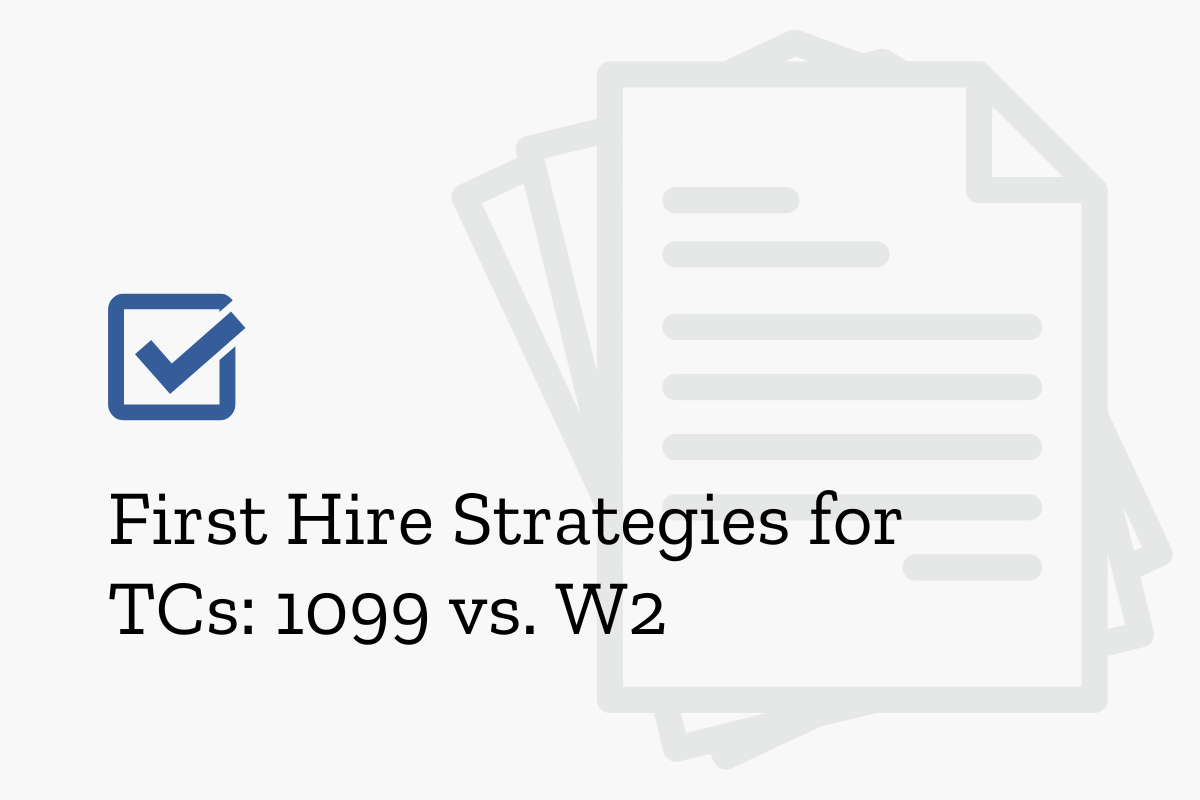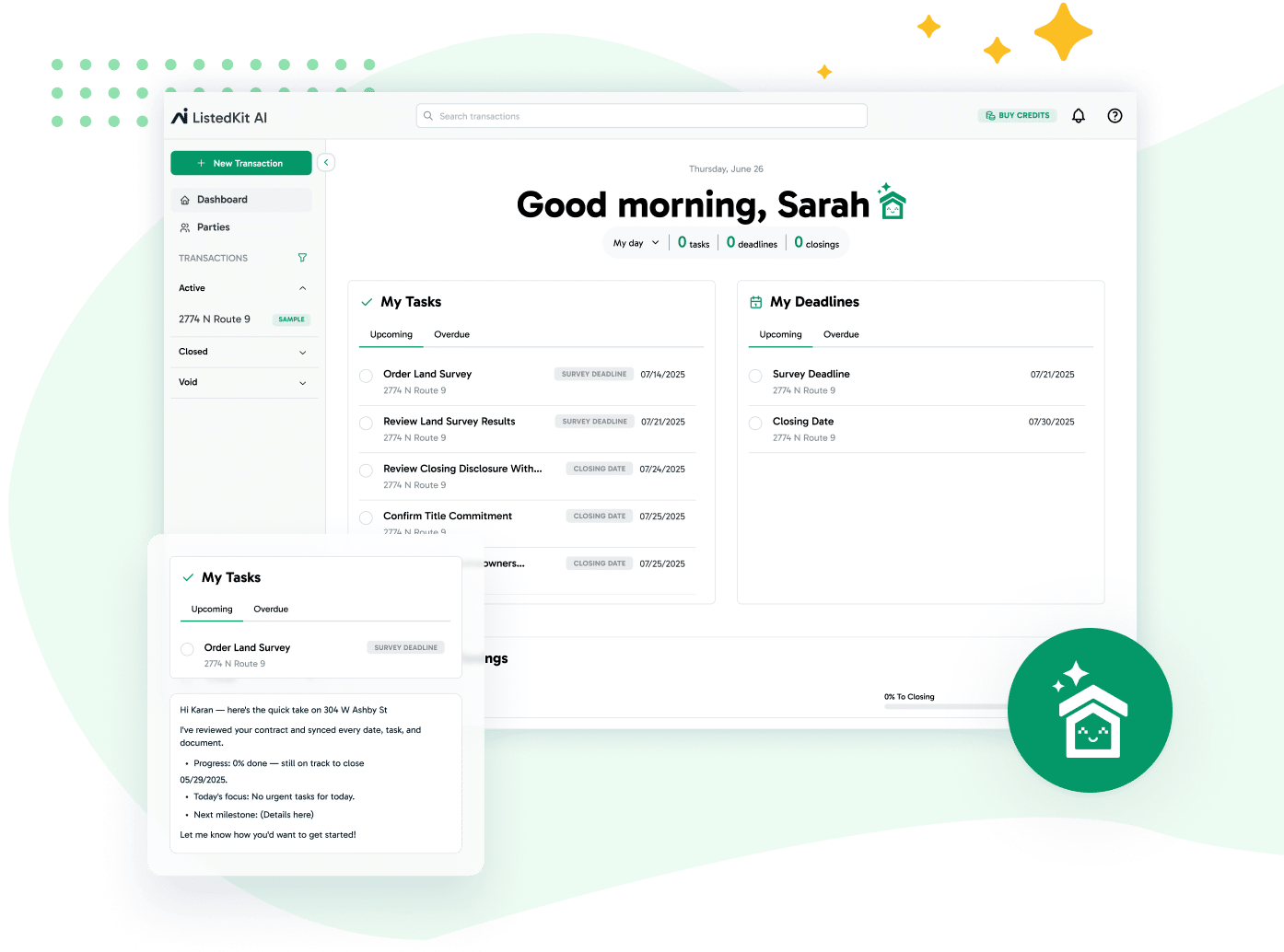Expanding the business is one of the milestones as a real estate transaction coordinator, but when the volume goes up, you will need help to manage your workload. Probably one of the biggest decisions you will make is whether to hire a contractor (1099) versus an employee (W-2). From financial obligations down to how scalable and efficient the business will be, it affects everything.
The following guide will walk you through making the hiring decision, outline key differences between contractors and employees, and then give real-world strategies for onboarding and managing your new team members.
Understanding the Difference Between Contractors and W-2 Employees
When understanding the legal and financial difference between a contractor and an employee, it precisely means:
Contractor (1099)
- Independent employees are thus responsible for their own taxes in self-employment tax and Social Security Tax forms.
- They receive a Form 1099-NEC at tax time, showing them their taxable income.
- Contractors control their schedules and the methods they use to complete work.
Employees (W-2)
- Hired for long-term, consistent work and receive a W-2 form to report their income.
- As the employer, you must withhold federal income taxes, contribute to Social Security wages, and pay into unemployment insurance.
- Employees submit a Form W-4 to determine tax withholding, and employers are responsible for payroll taxes, including Social Security, Medicare, and employment tax purposes.
Imagine you have a surge of transactions in the spring, but your workload is slower during the winter.
In this case, you might find that a contractor is perfect for handling the additional volume for a couple of months. If your business maintains several transactions throughout a year, an employee could be more fitting and reliable for the longer term.
When Is the Right Time to Hire Your First Contractor?
Hiring a contractor can be the ideal first step if:
- Your workload is seasonal or inconsistent. For example, you may only need help during the busy summer months when real estate transactions are booming.
- You need assistance with specialized tasks, such as managing marketing for a new region or helping with administrative duties during particularly busy weeks.
- You want flexibility without the financial burden of offering employee benefits like health insurance or a retirement plan.
- You’re testing new business areas or services and require expertise without the long-term commitment of hiring an employee.
- Quick scalability is necessary, and you need to bring on talent quickly to manage temporary increases in workload without the lengthy onboarding process typical for employees.
When Is It Better to Hire an Employee Instead of a Contractor?
As your business scales, there may become a point where bringing on a W-2 employee outweighs the benefits. Consider hiring a W-2 employee when:
- You need someone for long-term, consistent work that fits directly into your transaction coordination process. For instance, a virtual assistant that can help with admin tasks like sending email reminders or follow-ups.
- You need to train them internally using your methods and tools, using a very particular workflow specific to you and your operation.
- You want more control over their schedule and performance, which is crucial in making a cohesive and reliable team.
- The role requires integration with your team and frequent collaboration, which can be streamlined with a W-2 employee who’s consistently available and committed to your company’s goals.
- With employees who are better and more frequently trained and updated on industry-specific or geographic-specific regulatory requirements, compliance is easier than the potential liability for non-compliance when relying on independent contractors.
While W-2 employees require a much greater up-front financial commitment—payroll taxes, group-term life insurance, retirement plans—they can also bring more consistency with growth potential.
Financial Implications of 1099 vs. W-2: Payroll, Taxes, and Benefits
The financial aspect is a critical deciding factor. Here’s a breakdown of what to consider:
Contractors:
- You don’t need to pay for Social Security or Medicare taxes; contractors handle this themselves through their self-employment tax.
- There is no need to provide employee benefits like health insurance premiums, retirement plans, or paid time off.
- Payments are made based on project or hourly work, typically via direct deposit, and no payroll taxes or employment tax returns are required.
Employees:
- Employers must cover payroll deductions like Social Security, Medicare, and federal income tax withholding.
- Offering employee benefits, such as health insurance, retirement plans, and job security, is often necessary to attract and retain good talent.
- You are responsible for filing forms like Form W-2, Form 941, and even Form W-3c (for corrections).
While contractors offer financial flexibility, employees can add significant value as they become more integrated into your processes. Investing in an employee for long-term growth might provide better stability and control.
Scaling Your Business: When to Transition from Contractors to Employees
As your business grows, you may find that managing a team of contractors becomes inefficient. Transitioning to employees can provide:
- Consistent availability and commitment, especially when transaction volumes are high.
- Greater control over work methods, schedules, and outcomes—critical when scaling operations.
- A team that aligns with your business’s goals and culture creates a more cohesive workflow.
Consider the scenario where a team of transaction coordinators (TCs) starts by engaging contractors to manage occasional real estate transactions. They might struggle with the varying work styles and availability of these contractors.
However, as their workload stabilizes and becomes more predictable, transitioning to a full-time employee could prove beneficial. A dedicated W-2 employee could take on a range of responsibilities, streamlining operations and freeing the TCs to concentrate on broader business growth strategies and enhancing overall efficiency.
Investing in a W-2 workforce allows for a team that is consistently available and deeply integrated with your company’s objectives, providing a more stable and aligned approach to business scaling than what might be achievable with a fluctuating team of independent contractors.
Best Practices for Hiring and Managing Contractors and Employees
Consider the following tips when working with either of the following:
For Contractors
Set up for success when a contractor meets your needs by following these best practices:
- Write clear contracts that detail the following:
- Work expectations and deliverables
- How payment will be received—including late fees or penalties for failure to meet deadlines
- Who owns the rights to any work produced
- Leverage project management tools (e.g., Trello or Asana) and transparently communicate tasks (e.g., via email) to stay on top of tasks.
- Gain trust by offering regular feedback and clear directions while maintaining proper records through the correctness of payee statements, such as Form 1099-NEC.
For Employees
Once you bring your first W-2 employee on board, here’s how to make a seamless transition:
- Develop a formal onboarding process:
- Have them complete the necessary tax forms, such as Form W-4.
- Provide clear training on how they will fit into your workflow.
- Keep communication open through regular feedback and support.
- Provide them with a management tool like ListedKit where they can view documents and see where you and your clients are in the real estate process.
- Offer a positive work environment and growth opportunities through training programs, bonus structures, or employee stock options.
- Maintain all payroll processes, including filing Form W-2 and Form 941, as required.
Decision Time: Is a 1099 Contractor or W-2 Employee Right for Your Growing Business?
As you consider the perfect route for scaling your real estate transaction coordination business, knowledge of the key differences between contractors and employees is important:
- Contractors (1099) are independent professionals who handle their own taxes and control when and how they work. They’re excellent for flexible, project-based work without the commitment of offering employee benefits like health insurance or retirement plans. This option provides financial flexibility but sometimes lacks consistency.
- Employees (W-2) play an essential part in your business and provide the long-term, consistent support you need. You are responsible for withholding their taxes and offering other benefits to attract top employees. While this involves a greater upfront cost, you gain more control over the work process and can foster a cohesive team atmosphere.
Which option to choose depends on your business requirements, continuity of work, and long-term growth strategies. Each has unique advantages, but the right choice should align with your current operations and future goals to ensure smooth, sustained business growth.




